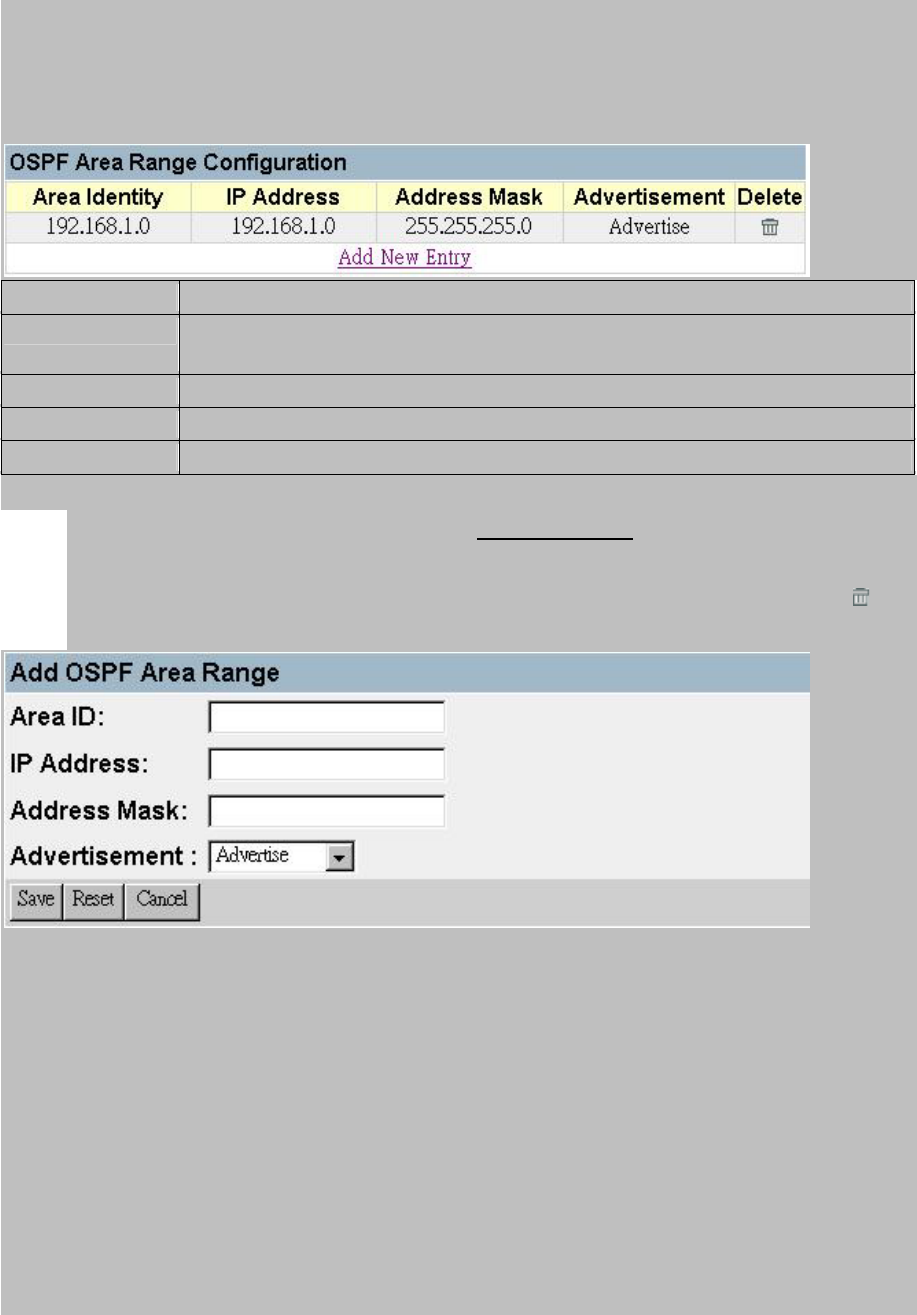
145
VLSMs allows you to configure each subnetwork within a larger network with its own
subnet mask. This provides a longer subnet mask that covers fewer host IP addresses,
thereby reducing the size of the routing tables that have to be exchanged. (For more
information on VSLMs, see RFCs 1219 and 1878.)
Parameter Description
Area Identity An OSPF area that includes all the OSPF routers within the assigned
address range.
IP Address The IP address used to calculate the area range.
Address Mask The subnet mask used to calculate the area range.
Advertisement Enables or disables advertising for this range.
Note:
To add an Area Range, click the string (Add New Entry). The screen can be show
as below. Specify the required parameters in the dialog boxes at the bottom of the
screen, and press Save. To delete an Area Range, click on the Delete icon ( ) for
the required entry.
OSPF Virtual Link Configuration
All OSPF areas must connect to the backbone. If an area does not have a direct
physical connection to the backbone, you can configure a virtual link that provides a
logical path to the backbone. To connect an isolated area to the backbone, the logical
path can cross a single nonbackbone area to reach the backbone. To define the path,
you must specify one endpoint on the ABR that connects the isolated area to the
common nonbackbone area, and the other endpoint on the ABR that connects this
common nonbackbone area and the backbone itself. (However, note that you cannot
configure a virtual link that runs through a stub or NSSA area.)
Virtual links can also be used to create a redundant link between any area and the
backbone to help prevent partitioning, or to connect two existing backbone areas into a


















